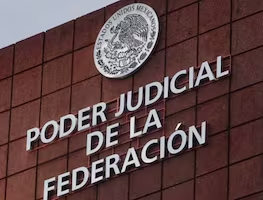Más Información

Con banda y canastas de frutas reciben a Sheinbaum en la Mixteca de Oaxaca; “llego con el corazón vibrando”, expresa

Comité Legislativo puede hacerse cargo de trabajo inconcluso: Morena; TEPJF puede dictar medidas de apremio contra PJ

Mexicanos sostienen la economía de EU, asegura Sheinbaum; “son lo que son por el pueblo trabajador”, expresa

Sheinbaum designa a Lázaro Cárdenas Batel para nueva Comisión en la Mixteca; atenderá a pueblos originarios
Mexico’s economic activity plummeted 18.9% in the second quarter compared to the same period last year as the economic shutdown caused by the COVID-19 pandemic and done in order to mitigate the spread of the new disease drove the country deeper into a recession , according to preliminary government data released Thursday.
Mexico’s statistical agency (INEGI) said that the second quarter running from April through June was 17.3% lower than the previous quarter in its seasonally adjusted estimates for gross domestic product.
The gross domestic product of industrial activities plummeted -26%, that of activities related to commerce, transport, and other services fell -15.6%; while that of agricultural activities contracted by -0.3% in the second quarter of 2020 compared to the same period the previous year.
By economic activities, industrial production plummeted -23.6%; the services sector contracted by -14.5%; while primary activities fell -2.5% during the second quarter of 2020 compared to the first quarter.
Recommended:
In June, the National Institute of Statistics and Geography (INEGI) announced that industrial activity fell 25% in April compared to March, the worst monthly decline since it began tracking the monthly data in 1993.
President Andrés Manuel López Obrador has said that the economy hit bottom in late April, and on Thursday, he predicted a rapid, V-shaped recovery.
“We expected this data because it is measuring April, May, and June, the three worst months,” López Obrador said.
Data for the next quarter would tell the story of the economy’s recovery, he said. “I can tell the people that the worst has passed and that the strategy worked and we are already recovering.”
The Mexican economy was already in a recession before the country recorded its first confirmed case of COVID-19 on February 28 as it had registered a downward trend for five consecutive quarters. It contracted 0.3% in 2019, a year of stagnation.
The economy is forecast to contract at least 9% in 2020.
Gabriela Siller, economic analysis director at Banco BASE, said in a report Thursday that the drop in economic output in the second quarter was the largest in Mexico’s recorded history, surpassing the Great Recession of 2009 and the peso crisis in 1995. During the Great Depression in 1932, Mexico’s economic output shrank by 14.92%.
“With the economic impact of COVID-19, the stagnation became one of the worst economic crises in the history of contemporary Mexico,” Siller said. She forecasts a contraction of 11.2% for 2020.
Recommended:
Not surprisingly, the pandemic lockdown hit the service sector the hardest. Unemployment and those who remain on payrolls, but who have been suspended from their jobs, compounded the drop in consumption.

The country has lost more than 1 million jobs in its formal sector. More than half of Mexicans work in the informal economy , which is believed to have shed many more jobs.
The government’s occupation and employment phone survey showed that the working population dropped by 12.5 million people in April. That number did not translate directly to the unemployment rate because many of those people still had jobs they just could not go to, so they were not looking for new ones, Siller said. That could change if the recovery is slow.
To date, the government has reported more than 408,000 confirmed infections and more than 45,000 deaths.
mp






